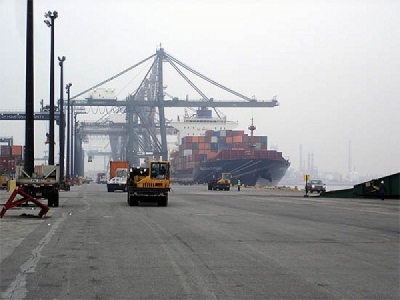
Posted on October 11, 2016
By Brandon Ross, BNA
House and Senate staffs are trying to work out a compromise on key differences affecting the nation’s harbors in their respective water resources bills, differences port operators say will keep them competitive in the years to come.
Ports stand to gain big under a bill passed by the Senate 95-3 that would increase federal coverage of navigation-channel dredging to 75 percent of the cost for channels to be deepened to 50 feet. The ports’ operators would cover the remaining 25 percent of cost.
Currently, the law only includes federal coverage at 75 percent for channel deepening up to 45 feet. Some port operators, especially along the East and Gulf coasts, say the 45-foot limit decreases their ability to compete domestically and internationally, and accommodate steadily burgeoning ship sizes, according to the American Association of Port Authorities (AAPA).
Under the Senate proposal (S. 2848), the government would still pay half of the cost after 50 feet, split with ports, to dredge deeper channels.
However, under the House proposal (H.R. 5303), which passed 399-25, ports would see no increase in the amount the federal government would pay to deepen their channels. This would leave the government’s 75-percent coverage threshold at the current 45-foot dredging depth and its 50 percent threshold at anything beyond 45 feet.
“We speculate that there’s discussions going on between the House and the Senate staff on the differences,” Jim Walker, director of navigation policy and legislation for AAPA, told Bloomberg BNA Oct. 5. “When Congress comes back in the middle of November, they’ll have these staff recommendations that they can approve and move towards a final passage.”
Walker confirmed that AAPA supports the Senate version on the cost-sharing change for navigation channel deepening.
This could likely be a major area of contention between Senate and House lawmakers as they try to come to a final bill which both chambers would be willing to pass. If the Senate version prevails on the dredging increase, the government would commit to increased spending, though any long-term benefits aren’t reflected in that conclusion.
Walker previously noted that while ships have gone through seven generations of increasing sizes in order to meet the demands of growing economies around the world, U.S. channels connecting ports to the rest of the world haven’t seen an increase in federal assistance for three decades.
The House bill also lacks a provision that exists in the Senate bill, which would guarantee ports receive more money annually from a tax fund that shippers pay into for harbor projects: at least a guaranteed 3 percent increase in appropriated funds from the Harbor Maintenance Tax (HMT) fund.
Under current law—which goes unchanged in the House version—if a sitting administration’s projection for the HMT revenue is lower than the previous year’s revenue, then ports could end up getting a lower appropriation of HMT money than the year prior, even though Congress is supposed to be moving slowly toward hitting a predefined (and increasing) targets for HMT appropriations each year, per the Water Resources Reform and Development Act of 2014 (Pub. 113-121).
For budgeting, appropriators are better able to work consistent funding amounts, Walker said.
“Rather than hit a drop and then a big jump—which would be harder for appropriators to hit—we’d rather have a safety net of a 3 percent increase on the prior year’s appropriation, whichever is greater,” Walker said.
Source: BNA





